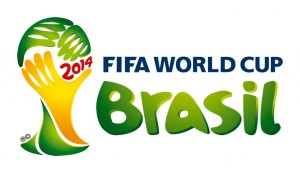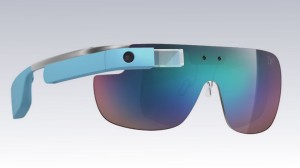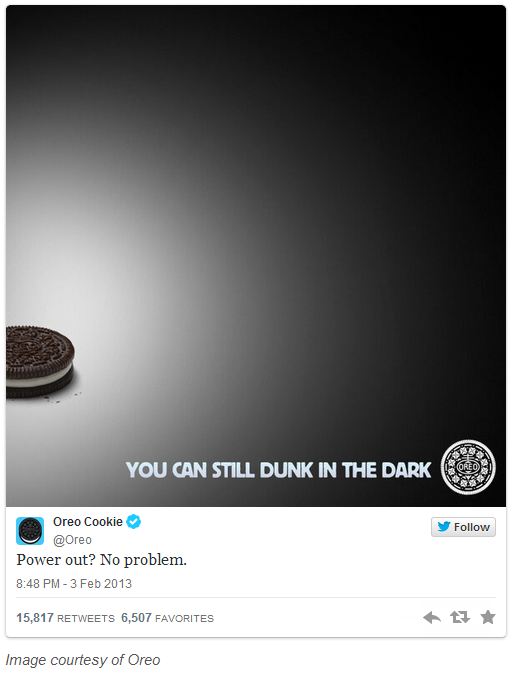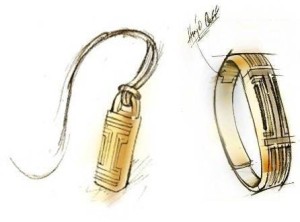How to Make Your Brand Stand Out in a Crowd
On a hot Monday afternoon, July 4th, 2016, competitors will gather at the boardwalk on Coney Island in Brooklyn, N.Y. to compete in one of the most famous Indepedence Day traditions around – the Nathan’s Hot Dog Eating Contest. Now, despite what some may think of the contest itself, there is little doubt the impact it has had on the Nathan’s Famous Hot Dog brand.
This was a brand that was previously only known to a select few in the northeast, but is now known around the world. And much of the thanks for that comes from those who showed up every  Fourth of July in front of the brand’s Coney Island location to see how many hot dogs they could eat in ten minutes.
Fourth of July in front of the brand’s Coney Island location to see how many hot dogs they could eat in ten minutes.
That’s right – a brand was able to build an entire branding strategy off of a competitive eating contest.
How did they do it? This situation is a classic example of a brand seeing an unmet need and filling the space.
There normally isn’t a lot going on in terms of televised entertainment on this day of the year, and the company had been holding hot dog eating competitions for many years. With the foresight to see the potential behind filling the entertainment void, Nathan’s then was able to connect their brand with the holiday in general. As the competition’s popularity grew, so did the brand recognition and brand equity.
For brands looking to stand out in a crowded marketplace, looking for ways to reach outside of just your product can be the most effective way to differentiate from your competitors. Nathan’s was sitting in the packed hot dog-selling industry, with little brand separation, especially when competing against the bigger brands in its space.
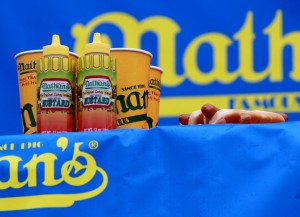 They didn’t look to try and create a fancy new logo or change their brand values – instead, they used the local strength of their brand and a timely piece of entertainment connected with their product to gradually build up.
They didn’t look to try and create a fancy new logo or change their brand values – instead, they used the local strength of their brand and a timely piece of entertainment connected with their product to gradually build up.
An important point to keep in mind, however, is that a quality product behind the brand is a vital piece of the puzzle. There is little doubt that if Nathan’s sold an inferior hot dog that didn’t stand up to the reputation of the brand, then its growth and reputation would be limited.
Let’s assume you are offering a high-quality product in a crowded space where your brand is struggling to stand out. You may not have something unique as the hot dog eating contest to help grow your brand, but your brand is so much more than its tangible assets.
Maybe your customer satisfaction is astoundingly good? Maybe you have a strong connection to a season, place or feeling? Or possibly your brand is synonymous with a particular event, much like the Nathan’s example.
All of these are ways to spread your brand beyond the traditional brand limits, and find new audiences who simply needed to be made aware of your brand and what it stands for.
Image Sources:
Image 1
Image 2
Learn more about building your best brand by downloading this FREE webinar, "Identifying The Opportunities In Your Brand Portfolio - Are You Capitalizing On Every Potential Business Opportunity Your Portfolio Provides?"
Addison Whitney Brand Fanatics Recap and Analyze Brand Impacts from Super Bowl Ads
The Super Bowl. Not only the biggest football game of the year, it’s also the biggest game in the advertising world. Many millions of dollars are spent on the annual event, which puts even more pressure on the created ads to push the needle for their brands.
And with a night full of high-profile brand decisions, we knew that time needed to be spent analyzing the commercials and the brands behind them – so on the Monday following the big game, our Addison Whitney brand fanatics gathered to do just that.
Right off the bat, our brand fanatics examined what their pre-conceived notions are for the various brands – what do we feel about the brand prior to seeing the commercials? This brand conception exercise served as the foundation for discussions post-commercial, where we identified four areas of each brand’s perception – target audience, emotional benefits, functional benefits, brand elements and tone.
Once the commercials for the highlighted brands were watched one more time, the discussion switched to how they lined up with the aforementioned brand perspectives. Did they align with how our audience previously saw the brand? Or did they feature a departure, whether intentional or unintentional, that signals a change of how we see and think of the brand?
One of the themes that came out of this year’s Super Bowl advertising was the trend of brands to focus on specific sub-brand within their portfolio instead of the overarching brand story. The Honda commercials for the Ridgeline trucks were cited as a perfect of this, where the Ridgeline brand characteristics were highlighted, overriding previous Honda perceptions.
Those brands who stayed more on-target with their overall brand connotation seemed to show a strong sense of brand awareness and a strategy that has stood the test of time. Bud Light’s brand image has largely gone unchanged in past years, and their advertisements this time around looked to continue and strengthen these perceptions.
 They are the brands with a certain comfort level to what their brand perception is, and are using the Super Bowl platform to continue this brand instead of trying to break new ground with their strategy. Especially when their target audience is very well-defined and fits within what their brand represents, these organizations are more likely to use their ads to reinforce their traditional messaging for their audience.
They are the brands with a certain comfort level to what their brand perception is, and are using the Super Bowl platform to continue this brand instead of trying to break new ground with their strategy. Especially when their target audience is very well-defined and fits within what their brand represents, these organizations are more likely to use their ads to reinforce their traditional messaging for their audience.
Self-awareness is another desired characteristic when it comes to advertisement strategy and Super Bowl messaging – brands who are comfortable with where they stand in the market. With many advertisements focusing on brands taking a “new direction” with their strategy, those brands who stuck with who they are stood out among the crowd.
These brands were banking on their already established brand equity to carry some of the load in messaging, using their ad time to push a specific narrative that is buoyed by their brand equity that is assumed to be present.
Overall, it was another successful AW Super Bowl Ad recap – now we want to hear your thoughts! Leave a comment or reply to us on our social channels and let us know what your favorite ad was, and how you think the brands involved impacted their branding efforts!
Addison Whitney is a global branding firm with a passion for building strong brands.
To learn more about Addison Whitney, visit our website at AddisonWhitney.com, or contact us here.
4 Ways Content Marketing Can Help Build Your Brand
Content marketing and branding should go hand-in-hand. However, there is often a disconnect between a brand strategy and the strategy around content creation, leading to a situation where an important aspect of brand cultivation is going untapped, without realizing the potential it has to move a brand forward.
But how can we bridge the gap between the two? Here are four ways content marketing can help build your brand:
- It Helps Define Who You Are
However your organization or brand decides to communicate what makes them unique and what makes them who they are, the message will be spread via your content marketing. Finding your niche and your expert area is vital in raising a brand’s reputability, and therefore where consumers will see it as the thought leader. Content marketing and content creation help you streamline your brand, and not waste time and energy trying to be everything for everybody.
- It Keeps Your Messaging Consistent.
A consistent content marketing messaging strategy is crucial to building both a strong brand and strong thought leadership credentials. Audiences and consumers appreciate when they can trust an organization, and when they have a sense of what to expect when interacting with them. Whether it’s an opinion piece on a new law or communicating a groundbreaking new best practice, when establishing a brand message that stays true to who the brand is, consistency is key.
- It Highlights the Best of the Best Within the Brand
Every brand and every organization has their “rock stars” – subject matter experts, innovative strategy developers, or any employee that stands out among the crowd. Putting these people at the forefront of a content marketing strategy and maximizing their exposure to the areas in which your company excels can drive positive attention that will in turn drive forward your brand and its thought leadership standing.
- It Helps Tell Your Brand Story
You can’t just create a brand and hope that your consumers and the industry will embrace it. Just the same, you can’t become and expert with a few unconnected blog posts. You have to develop your story – and then you have to know how to tell that story. For brands, the story can be anything from a theme behind your logos and name, or a strategy that links your branding efforts together. Whatever it is, your story needs to connect with the audience, and with a strong content marketing strategy, the story can be told that sets your brand apart.
Image Source:
https://startuphyderabad.com/wp-content/uploads/2015/07/contentmarketing.png
Addison Whitney is a global branding firm with a passion for building strong brands.
To learn more about Addison Whitney, visit our website at AddisonWhitney.com, or contact us here.
When is it Time to Reinvent the Brand Wheel?
We've all heard the expression “there’s no need to reinvent the wheel.” Typically, it is used to explain the reasoning behind keeping the status quo, and not taking a chance and making a change where the speaker doesn’t see one being necessary.
A brand strategy approach that takes this route is a risk and reward proposition, and a decision that does not come with a one-size-fits-all aspect. Each brand and each brand marketing approach is different, and the ones that find the most success are those who fit the decision appropriately with the brand.
Brand equity can be one of a company’s strongest and most valuable assets,” says RJ Clouse, Brand Strategy Manager at Addison Whitney. “As it relates to key elements of a brand, I think that reinvention rather than recreation is the key to ongoing and deep emotional connections.”
The Budweiser Clydesdales have become a staple of the brand’s Super Bowl advertising campaigns. For years, it has been a given that at least one of their commercials during the game would either feature or have a tie back to the Clydesdales. It’s what people have come to expect from the brand, and so far they have complied year after year.
Another less famous, but just as powerful for the brand, is Old Spice, says Clouse.
“Old Spice, with heritage in scent and masculinity, reinvented its message of what it means to be masculine in an authentic and humorous way. This approach builds the deep brand connection with a solid foundation in brand equity for a new generation.”
After years of brand equity building connected with this particular ad campaign, how wise would it be for Budweiser to change its approach? In other words, when you know what kind of ad you are getting, and it has been successful in the past, does it make sense to reinvent the wheel?
The answer seemingly lies within the strength of the metaphorical wheel. Is it an essential and part of the foundation for the brand strategy? Or is it an aspect that has made a move recently into its strong point, but seems to have a shelf life?
In the second instance, the rule of thumb seems to be that it is better to make a change one year too soon than one year too late. Brand marketing can withstand a response that consumers miss that characteristic, but that response is preferable to backlash that it has become old and outdated.
This is where brands and marketers need to be one step ahead in the strategic planning. They need to see the writing on the wall and anticipate what is coming down the road when it comes to brand staples and have plans in place before its run ends.
On the other side of the equation, when a brand staple has become synonymous with the brand itself, as difficult as it may be for the creative focus and the creative departments, keeping it around in some fashion is really the best option.
Consumers, for the most part, gravitate toward the familiar when it comes to their branding, and in this case, the familiar is something that can help grow a brand’s trust with the consumer. They see something they recognize in an ad, such as the Budweiser Clydesdales, and they begin to connect the brand with the nostalgia and comfort that these familiar images bring.
“At times, I think recreation may pay off for short-term benefits of increased awareness or trial,” says Clouse. “But these approaches may not build the long-term, deep, emotional brand equities we strive to help brands achieve.”
Addison Whitney is a global branding firm with a passion for building strong brands. We specialize in verbal and visual branding, brand strategy and market research.
To learn more about Addison Whitney, visit our website at AddisonWhitney.com, or contact us here.
How to Leverage Social Media for Your Brand
There are a number of social media best practices to keep in mind related to leveraging social media for your brand, many of which center around the idea that keeping the “social” in social media, an often-forgotten but very important aspect.
Let’s start there – social media, at its essence, is a conduit for conversation. But many brands forget this aspect of social media marketing, and treat their channels as one-way communication platforms, pushing their messages out and  virtually ignoring all incoming communication from their fans.
virtually ignoring all incoming communication from their fans.
Actively engaging its customers is one way to personify your company’s brand, giving it more of a “human” identity rather than one of a faceless corporation. This humanization of a brand has been shown to play a positive role in potential consumer decisions.
Engagement can be both positive and negative. Positive posts can include pushing out conversational content and responding to positive feedback from fans. But responding to negativity is also important, if not more, to effective social media engagement. Responding to negative posts in a timely and polite manner can help calm the poster, and also prevent any potential crisis from forming over a negative situation.
A great rule of thumb to keep in mind is the “one-in-seven rule.” As discussed by Chris Litster of Constant Contact, this rule states that companies should only overtly promote their business in one of every seven posts. The remaining six should be focused on valuable content sharing for their audience. Pairing promotions with solid content extends the reach and engagement level of your posts with your audience.
Generally speaking, people pay more attention to content that interests them than they do standalone promotions, which tend to fly more under the radar of the audience. If you follow this rule, even with some leeway, your brand will be more recognizable to the audience due to your habit of sharing great content. This way, when you do post a promotional message, it is less likely to be overlooked.
Social media best practices tend to revolve more around what a brand shouldn't do rather than what they should.
First, a word of warning when creating posts centered around social media trends – proper research is necessary to avoid creating a crisis for your organization. For instance, in 2012 the hashtag #Aurora was trending because of a mass shooting that occurred at a midnight showing of The Dark Knight Rises in Aurora, Colo. The day after this tragedy, the company Celebrity Boutique tweeted the following message: “Aurora is trending. It must be because of our Kim K. inspired Aurora dress”
Following the understandable and considerable uproar, the company released a statement saying they did not check what background of the social media trend for “Aurora” was prior to composing the message. Had the company done their due diligence and performed seemingly simple research, they could have avoided this unfortunate situation rather easily.
Additionally, the goal shouldn't revolve around “going viral.” Taking a viral marketing focus has such a small rate of success that attempting to find positive ROI will prove difficult. There is a reason why viral posts carry the social and cultural weight they do – the attention comes due to their rarity. Just like everyday occurrences don’t warrant substantial news coverage, the dime-a-dozen nature of viral marketing attempts fall by the wayside unless they contain a truly memorable and differentiating aspect.
When used correctly, social media marketing can be a valuable tool to leverage your brand. In today’s society, a company that knows how to use this resource to its advantage holds an important leg up on the competition, and puts itself at the forefront in the minds of consumers.
Sources:
https://mashable.com/2012/07/20/celebboutique-misguided-aurora-tweet-sparks-twitter-outrage/
Adidas vs. Nike, Which Brand Really Won The World Cup?
Adidas vs. Nike, Which Brand Really Won The World Cup?
Guest Blogger: Lindsey Freedman
The FIFA World Cup, like all large scale sporting events, is every brand’s dream platform. It gives a brand the potential to be recognized on a global platform while influencing the opinions of millions. The 2014 FIFA World Cup was no different-over $400 million were spent on marketing during the tournament.
What makes the 2014 World Cup so different than past years is that brands have to focus on reaching target audiences across multiple platforms. Jason Klein, ListenFirst’s co-founder and Co-CEO, said, “More than ever before, this year's World Cup forced brands to think beyond a single platform and instead take a cross-channel approach to engaging fans throughout the tournament."
Adidas and Nike were the most competitive brands across the multiple online platforms during the 2014 World Cup, despite the many sponsors that included McDonalds, Coca Cola and Sony. What’s so interesting about Adidas and Nike is that Adidas was a 2014 World Cup sponsor, while Nike was not.
Below are some notable reasons why Adidas and Nike were the “winning” brands of the 2014 FIFA World Cup:
Adidas:
For the past 66 years, Adidas has been the leader in soccer products. So, their World Cup sponsorship makes sense for the brand. Adidas was no doubt the most notable sponsor of the World Cup. Their signage and logo were prominently displayed throughout all the stadiums. They even inspired athletes with their “Now or Never” signage that intensified throughout the matches. Adidas also created a Twitter campaign for @Brazuca, the 2014 FIFA World Cup official match ball. Throughout the tournament the account grossed 3.5 million followers. Additionally, both World Cup finalists, Germany and Argentina, were sponsored by Adidas.
Nike:
Nike, on the other hand, was not a 2014 World Cup sponsor but their presence was well known. Their brand strategy was to sponsor multiple teams and distinguished players for the World Cup. However, Adidas happen to pick the right teams to sponsor in terms of the World Cup final. Furthermore, Nike’s “Winner Stays” video, that featured multiple renowned athletes such as Cristiano Ronaldo, Wayne Rooney and Tim Howard, reached more than 4.2 million views.
ListenFirst, a social analytics company, tracked the growth of brands during the course of the tournament through impacts on social communities, including Facebook, Twitter, Instagram and Youtube. Adidas scored a 90.4 while Nike scored a 83.4 indicating that both brands enjoyed substantial and comparable growth throughout the 2014 World Cup. According to the data Adidas was the most talked about brand on Twitter, whereas Nike scored big on Youtube views.
But overall, if a winner had to be declared - we’d say we have got a tie. Despite the millions of dollars spent on Adidas and Nike’s campaigns, they both scored a larger audience that they will be able to influence year-round.
On a side note, Tim Howard, USA goalie, has become a powerhouse brand. He gained over half a million Twitter followers during the World Cup and at one point he was mentioned 55,187 times a minute during the match against Belgium. Howard is in talks with several brands for multi-million dollar sponsorship opportunities, according to a recent interview with ADWEEK.
The FIFA World Cup is definitely one of our favorite events. No one wants to wait another four years, but we look forward to what brands bring to the 2018 World Cup in Russia.
###
Sources:
"The 10 World Cup Sponsors That Grew the Most in Followers, Fans and Subscribers"- Ad Age
"Adidas won the World Cup battle, but Nike is winning the soccer wars"- Quartz
"Three Brands That Won At The World Cup" - Forbes
"World Cup Hero Tim Howard Talks About Sudden Fame Being a role model is part of the package" - ADWEEK
Brand Collaborations: The Innovative Movement in Branding
Brand Collaborations: The Innovative Movement in Branding
Guest Blogger: Lindsey Freedman
Google Glass & Diane von Furstenberg, Starbucks & Duracell, Hershey & Betty Crocker, are all examples of popular brand collaborations. As discussed in our previous post on Fitbit and Tory Burch, brand collaborations are occurring more because of the potential effects on brand equity and expanding target audiences.
According to Michelle Greenwald of Inc., this trend began in the 1990s when Lexus offered interior options by famous fashion retailer, Coach. Fast forward to 2014 and this trend now expands through numerous industries including retail, cosmetics, healthcare, food and more.
Brand collaborations, or partnership marketing, provides exposure across multiple brand channels and expands target audiences. The study also shows that co-branding enhances brand positioning, challenges perceptions and advances brand equity.
For example, a recent study by Mediator, a London- based agency, revealed that 80 percent of respondents consider collaborations a high return on investments. Furthermore, 83 percent of respondents agree that collaborations are overall effective.
To successfully collaborate with another brand there are a number of factors to consider and business objectives to define but below are some tips for valuable co-branding endeavors:
1. Align your corporation with a comparable organization.
The most successful brand collaborations involve corporations that share similar visions. Mutual interests create an authentic relationship that is easily received by target audiences. For example, Apple and Nike’s Nike +iPod Sports Kit fulfilled a deficit in the fitness market. Both corporations are leaders in their respective industries, thus their collaboration expanded audiences. As of 2013 there were 18 million Nike+ users and the collaboration has been on-going since 2006.
“Look for brand fit not only from the perspective of attributes and benefits but also with respect to core values and corporate philosophies,” said Steve McKeee, President of Mckee Wallwork and a Bloomberg Business columnist
2. Outline goals that compliment both brands.
A clear set of goals will guide and organize the business endeavor. Also, mapping out shared interest will focus the collaboration. It is important to develop goals and guidelines that align with your own business practices and ethics. This will help create a swift transition and protect your own brand. A great tool is a co-branding manual; many corporations, such as AT&T, have co-branding guidelines to help direct managers.
3. Use brand collaborations cautiously and sparingly.
Research is the key to creating valuable brand collaborations. Brand collaborations have the potential to be unbelievably successful and develop further brand equity. However, if executed incorrectly they can have a dramatic effect on your audience’s perceptions. Research is important when aligning with another organization to avoid negative partnerships.
Co-branding endeavors add a level of engagement that traditional communications strategies are not able to provide. They create a powerful effect across multiple marketplaces. Do you think this trend strengthens brand equity, or will this movement soon fade out?
###
Sources
"Whitepaper by Mediator"- The Drum
"Twenty Co-branding Examples" - Bloomberg Business Week.
"The Pro's and Con's of Branding"- Bloomberg Business Week.
"The Secrets of Successful Co-Brands"- Inc.
"4 Lessons on Co-Branding To Co-Crush The Competition"- The Fast Company
"18 Million People are Using Nike+ to Track Their Fitness"- The Fast Company
Real-Time Marketing: Making It Work For Pharma Branders
Real-Time Marketing: Making It Work For Pharma Branders
Let’s start by creating a baseline for this topic. What is real-time marketing (RTM)? Of all the attempts to define this marketing strategy, a blog post from Evergage sums it up quite nicely: RTM is “…the practice of brands engaging their audience via content, advertising, and product placement that is relevant to a specific current event or cultural happening. The content is most often in the form of a “meme” or graphic advertisement shared through social media channels.”
An easy example? Oreo’s infamous tweet during last year’s Super Bowl.
When we start to look at RTM (sometimes referred to as viral marketing) through a healthcare lens, we need to dig a bit deeper. Pharmaceutical branding is inherently complicated. The industry is overflowing with rules, regulations and guidance – all of which make marketing a bit challenging. And because of these parameters, real-time marketing, as explained by Evergage, seems somewhat elusive.
But, it really is all about perspective. Mashable frames it up a bit differently.
“…real-time marketing success starts with a brand's day-to-day activity, not a single well-timed moment. Don't swing for the fences your very first time out. Implement small, real-time marketing initiatives on a regular basis; patiently teach your audience they can expect timely, relevant communications from your brand. Then, when a really big opportunity arises, your team is poised and ready to make the most of it.”
When considering in Mashable’s frame of reference, RTM and pharmaceutical branding seem to better coexist. This tactic becomes less about a cute response and more about being responsive – and proactively so. Pharmaceutical companies face an unfathomable number of questions from a variety of audiences – and comprehensive, strategic marketing efforts can go a long way to answering a lot of them before they’re even asked.
Pharma branders can utilize RTM by identifying opportunities that work within the confines of their industry – and by viewing those parameters as guideposts, rather than obstacles. A program like TEDMED is a great example of such an opportunity TEDMED brings together like-minded industry professionals and gives them a variety of platforms to promote their brands. Brands can use all of the tools of RTM to tell their story while they attend (or even just live stream) this kind of conference.
And, in order to succeed at RTM, you have to get comfortable with learning as you go along. The fundamental tactics of this type of strategy are content, social channels, mobile and video. Can’t focus on all four areas? Then specialize in one and grow from them. But, the key to real-time marketing is responsiveness – build a program around that and you’re more than on your way to a successful campaign.
# # #
Sources
“Real-Time Marketing Isn’t What You Think It Is,” Evergage.
“Someone Give This Oreo Employee A Raise,” Mashable, Feb. 3, 2013.
“4 Steps to Explosive Real-Time Marketing,” Mashable, July 15, 2013.
“Real-Time Marketing Opportunities in Healthcare?,” brandgagement, May 7, 2013.
“2014: The Year of Digital Pharma?,” Pharmaceutical Executive, Jan. 23, 2014.
Is Brand Power Waning? (Part One)
Is Brand Power Waning? (Part One)
Guest Blogger: Ashley Wiederhold
An article in The New Yorker has raised some interesting questions: Despite all of the money, time, and energy that businesses invest in their brands, is brand power a thing of the past? Is the influence of a positive, strong brand waning?
The argument put forth by the author of the article is that brands have become less important as consumers have become better informed. The article reads: “It’s a truism of business-book thinking that a company’s brand is its ‘most important asset,’ more valuable than technology or patents or manufacturing prowess. But brands have never been more fragile. The reason is simple: consumers are supremely well informed and far more likely to investigate the real value of products than to rely on logos.”
The article goes on to assert that today’s consumers have access to “reams of research about whatever they want to buy.” Ultimately, the author argues, the Internet has provided an avenue through which consumers can read reviews, reports, research, and other data about companies and their products—and that these pieces of information, more than any brand image, shape consumer behavior.
It is certainly true that today’s consumers have the ability to read up on just about any product, service, or company that they choose. But to say that this is weakening brand power is to overlook the fact that today’s companies can use the Internet to strengthen a brand’s image, rather than allow the World Wide Web to detract from it.
When used correctly from a marketing standpoint, the Internet is an invaluable platform upon which businesses can build their brand’s image. Through websites, blogs, online articles, social networking sites, etc., today’s companies can spread information about their offerings, their values, and their mission on a larger scale than ever before.
But let’s take a second to look at the argument that the article asserts. Brand power can wane with an increase in consumers’ access to information if that brand is built upon nothing but a logo and a tagline. The key to strengthening a brand in today’s information-centric world is to understand that a successful brand should encompass more than a visual identity. It should borrow from and build upon:
-- The company’s reputation
-- The characteristics that make the company unique
-- The emotional impact that the company has on its target audience
-- How customers experience the products and services that the company has to offer
When approached this way, it’s easy to see how Internet-based content—online reviews, social media activity, etc.—can actually help strengthen a brand image. But this is only possible if the company in question upholds the values, mission, and other attributes with which its brand is associated. Otherwise, the loyalty of consumers will wane—just as brand power will deteriorate—as people start to understand that the image a company puts forth is not an accurate representation of the business. Now, more than ever, it’s imperative for companies to build brands that they can stand behind.
# # #
Source
"Twilight of the Brands," The New Yorker
Fitbit, meet Tory Burch. Tory Burch, meet Fitbit…?
Fitbit, meet Tory Burch.
Tory Burch, meet Fitbit…?
More and more, companies are partnering to bring products and services to consumers that cross socioeconomic, demographic and psychographic lines. Sometimes, bringing two companies together not only reaches a larger audience, but it exponentially builds their brands. Think Apple and Nike, Eddie Bauer and Ford, The Global Fund (Red) and GAP (along with other brands, including Apple, Hallmark, Converse and Dell) and Isaac Mizrahi and Target.
Earlier this year, and on a more unconventional note, Fitbit and Tory Burch announced a partnership: The Tory Burch for Fitbit accessories collection.
In one hand, you have Fitbit, a pioneering maker of health and fitness tracking gear. The NPD Group now says Fitbit has 77 percent of the market for full-body activity trackers despite intense competition from Jawbone, Nike’s Fuelband, and others.
In the other, there’s Tory Burch, an American lifestyle brand with more than 100 freestanding boutiques and a presence in more than 1,000 department and specialty stores. The collection, known for color, print and eclectic details, includes ready-to-wear, shoes, handbags, accessories and beauty.
In this fashion meets fitness venture, Tory Burch has designed pendants, bracelets and wristbands that will hold the Fitbit Flex tracker (see images below).
The skinny? Well, the Fitbit Flex retails for $100, but Tory’s jewelry ranges from $50 to $595. And, one of the brand elements that seems to resonate with Fitbit products is their wearability and durability, which seems a little bit at odds with Tory’s classics.
The real question here is, will existing Flex owners buy into the accessory options from Tory Birch, or just stick with the basic plastic bands?
And, on the flipside of this thinking, could Fitbit welcome an entirely new, more affluent audience through this partnership? After all, the pendant and bracelet options are much more attractive for going out.
Either way, I can’t wait to see the finished products (hopefully in silver, too!), and once it launches, watch this unique partnership grow.
# # #
Sources
“Twenty Co-Branding Examples,” Businessweek.com, https://goo.gl/S6Uoy
“How Fitbit Survived as a Hardware Startup,” Forbes.com, https://goo.gl/NbSNpf
“Buzz,” Fitbit.com, https://goo.gl/YGcM8n
“About the Company,” ToryBurch.com, https://goo.gl/SGcIkr



